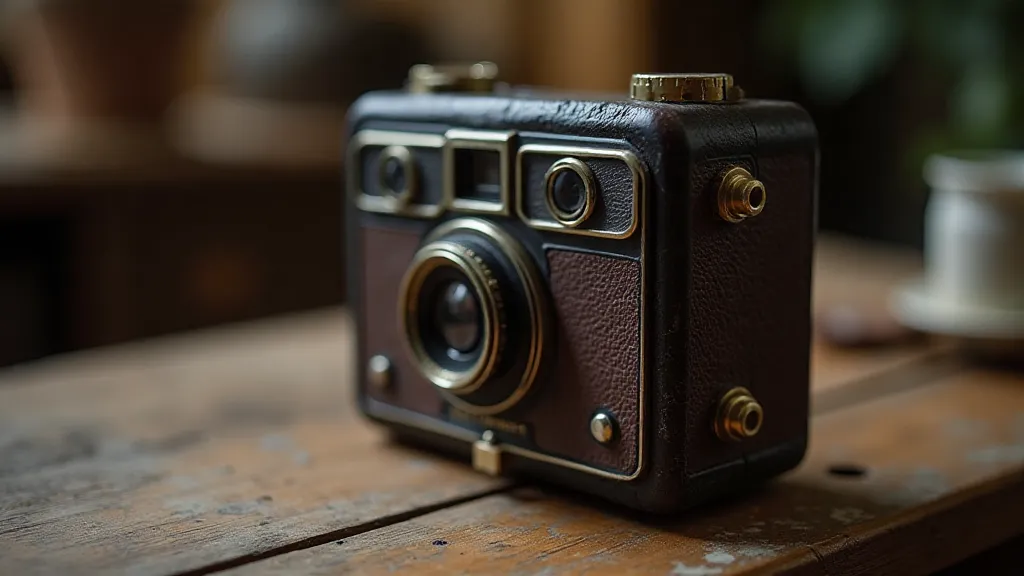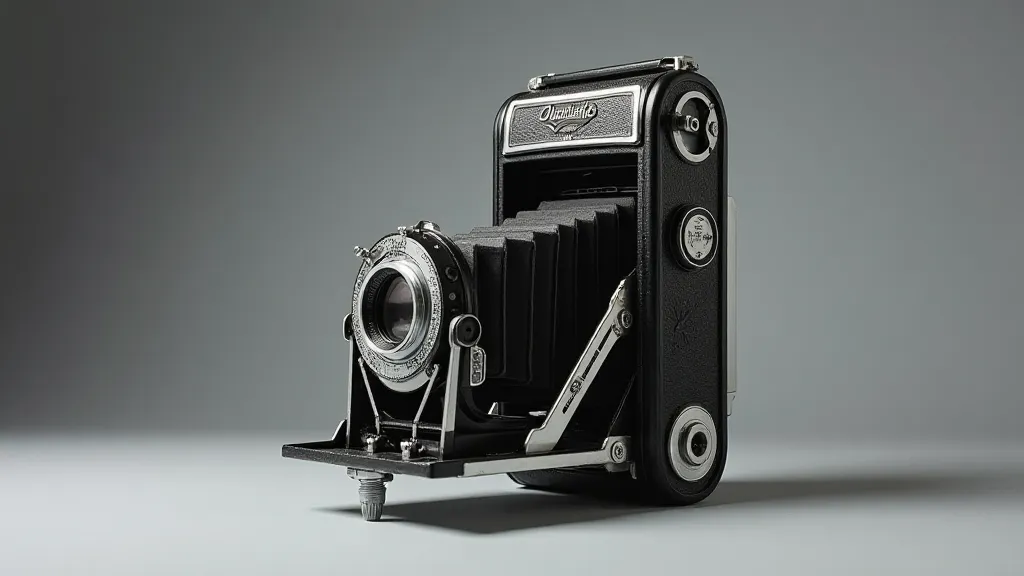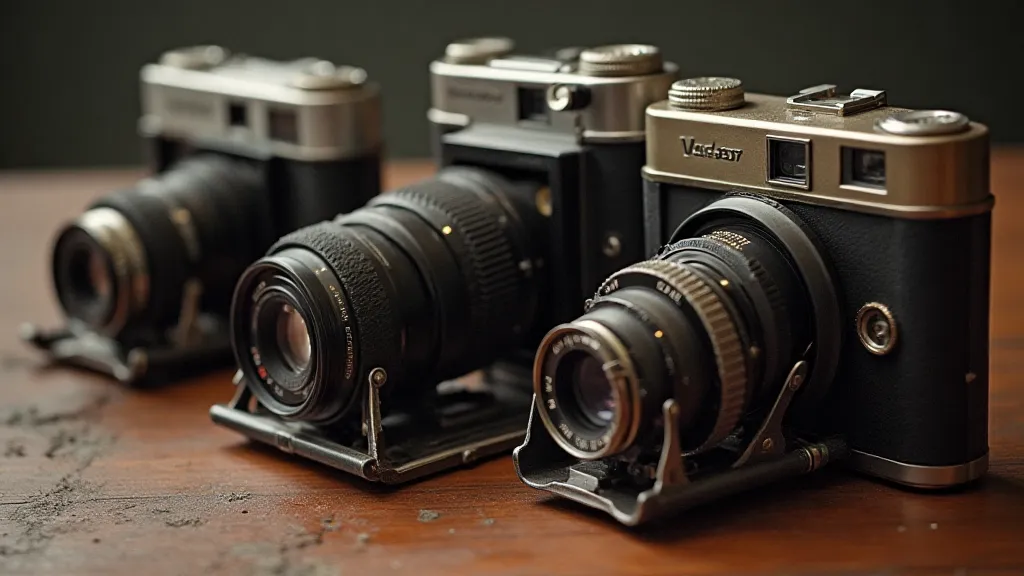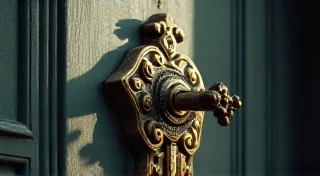The Mechanical Oracle: Predicting Technological Shifts Through Antique Camera Design
There's a certain poetry to holding an antique camera. Not just the beauty of the brass and leather, the intricate clockwork, but a feeling of connection to a lineage of innovation. These aren't just photographic tools; they're frozen moments in time, mechanical oracles whispering tales of a world grappling with a brand new way to see. We often discuss “vintage cameras” or “collectible cameras” in terms of rarity and aesthetic appeal, but truly appreciating them means recognizing how their design choices, born of necessity and ingenuity, foreshadowed the technological leaps we take for granted today.
My own fascination began with a Kodak Brownie II, gifted to me by my grandfather. It wasn’t particularly valuable, but the simple act of winding the film, the click and whir of the shutter, and the patient wait for the image to develop – these experiences fostered a reverence for the process. It made me realize photography wasn’t just about pressing a button; it was about understanding light, chemistry, and mechanics in a deeply personal way.
The Dawn of Accessibility: The Kodak Brownie and Beyond
George Eastman’s Kodak Brownie, introduced in 1900, represents a pivotal moment. Before the Brownie, photography was a laborious, expensive hobby reserved for the affluent. Eastman's genius wasn't just in his photography; it was in his marketing and his simplification of the process. The Brownie, priced at a mere $1 (equivalent to roughly $35 today), democratized photography, placing it in the hands of ordinary people. This seemingly small act had a profound impact. Suddenly, families could document their lives, children could capture their adventures, and a collective visual memory began to be woven.

The design itself offered clues to future trends. The box camera format, while limiting in its functionality, emphasized ease of use. This foreshadowed the point-and-shoot cameras that would dominate the late 20th century, and ultimately paved the way for the smartphone cameras we carry today. The focus on portability and simplicity, sacrificing manual control for convenience, was a conscious decision rooted in the desire to reach a wider audience – a principle still driving camera design today.
The Rise of Precision: Leica and the Miniature Revolution
While the Brownie championed accessibility, the Leica, emerging in the 1920s, took a different path. Ernst Leitz’s creation, the Leica I, was a miniature marvel – a 35mm camera designed for high-quality images. Its design prioritized precision and control, targeting professional photographers and enthusiasts. The Leica's compact size was a direct response to the bulkiness of earlier large-format cameras, hinting at a future where photographic equipment would become increasingly portable.
Consider the development of interchangeable lenses. While not entirely unique to Leica, its implementation on such a compact body was revolutionary. This concept – the ability to swap lenses to suit different shooting situations – is a cornerstone of modern photography. The shutter speed dial, initially a relatively simple mechanism, evolved over subsequent Leica models, offering increasingly complex and nuanced control over exposure. Each adjustment, each lever, represented a step towards the sophisticated metering systems and image stabilization features we now expect.
The Folding Camera: A Marriage of Portability and Quality
The folding camera, exemplified by brands like Kodak and Zeiss Ikon, represented a fascinating compromise. It attempted to combine the portability of the box camera with the higher image quality and greater flexibility of larger formats. These cameras, with their clever collapsing designs, were popular with traveling journalists and photographers who needed to document the world around them.
The bellows, a key element in folding camera design, allowed for focusing at varying distances. This early form of variable focal length photography foreshadowed the zoom lenses that became ubiquitous in the digital age. The careful engineering required to create a reliable, compact folding mechanism – a delicate balance of metal and leather – demonstrates a profound understanding of materials science and precision manufacturing. The rise and fall of the bellows, a tangible reminder of the photographer's active role in the image-making process, is a stark contrast to the instantaneous capture of modern digital cameras.

The View Camera’s Legacy: Digital Manipulation and Perspective Control
Although largely superseded by smaller formats, the view camera holds a unique place in photographic history. With its ability to move the lens and back independently, it offers unparalleled control over perspective and depth of field. This manipulation of perspective, commonplace in modern digital photography through software like Photoshop, has its roots in the view camera’s design.
The movements – rise, fall, shift, and tilt – allowed photographers to correct converging lines in architectural photography or to create miniature landscapes by manipulating depth of field. These techniques, once requiring painstaking manual adjustments, are now readily achievable with a few clicks of a mouse. The legacy of the view camera isn’s simply in its visual possibilities, but also in its demonstration of the power of controlled perspective – a principle still fundamental to photography and visual communication.
Beyond the Mechanics: The Human Element
Ultimately, the beauty of antique cameras lies not just in their mechanical ingenuity, but also in the stories they hold. Each scratch, each dent, each faded label is a testament to the photographer’s journey – the moments captured, the experiences shared, the world witnessed. Examining these cameras offers us a tangible connection to the past, a reminder of the pioneers who shaped the art and science of photography.

Collecting these artifacts isn't just about accumulating objects; it's about preserving a piece of photographic history, appreciating the craftsmanship, and understanding the evolution of a technology that has fundamentally altered how we see and understand the world. Restoring an antique camera, carefully cleaning and lubricating its intricate mechanisms, is a profoundly rewarding experience – a chance to connect with the ingenuity of the past and to ensure that these mechanical oracles continue to whisper their tales for generations to come.





